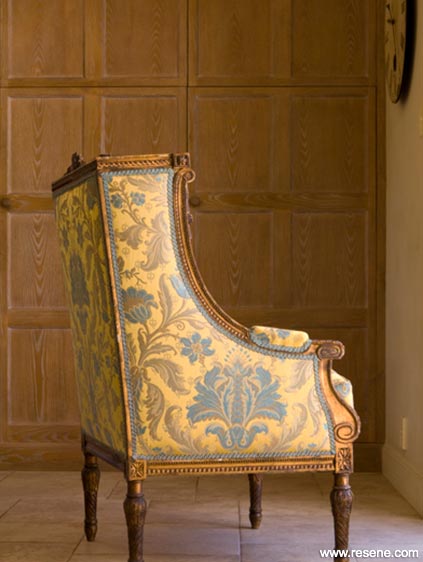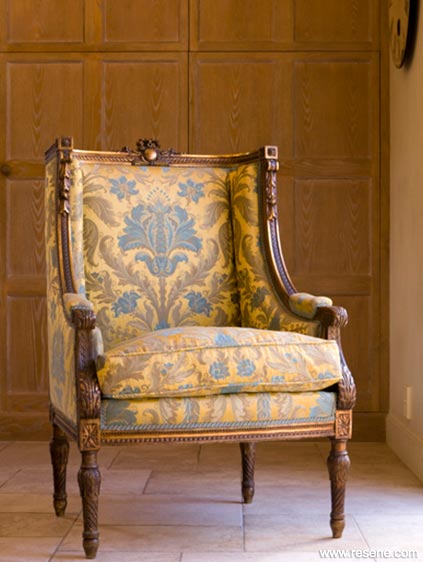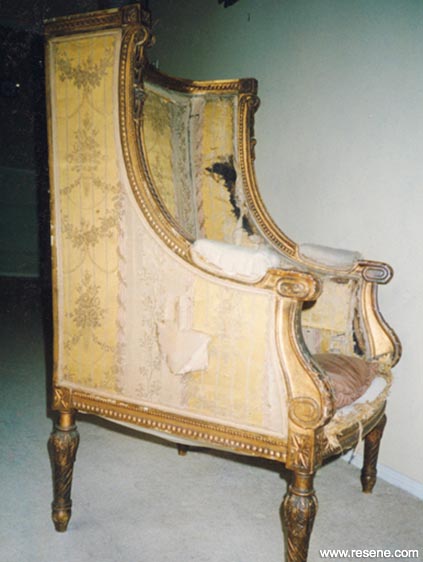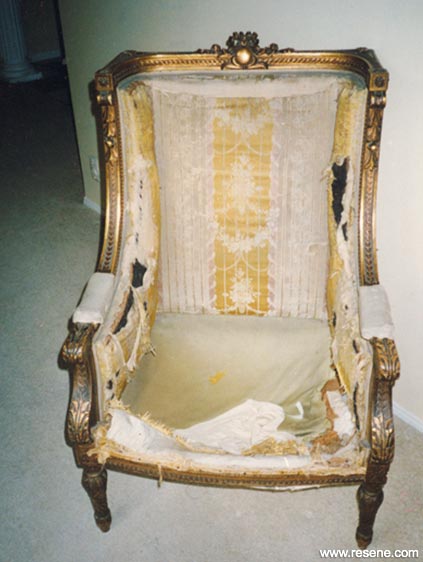From Habitat magazine - issue 12
Don’t throw out that old chair your grandmother gave you. If it’s lasted this long, it might be worth a spruce up.
When it comes to furniture, it seems we’re finally waking up to the insanity of buying something only to toss it out the moment it starts to look a bit shabby or outdated. Retro and antique furniture, and even pieces that are a couple of decades old, are finding new favour with design-savvy homeowners who see past the faded fabric and worn springs to the treasure beneath.


“There’s a lot more interest now in refurbishing existing furniture,” says Mark Waters from Upholstery Craftsman. “Some people have been burned by buying cheap imported pieces, and are starting to see the value in quality second-hand purchases.”
His Wellington-based boutique upholstery business specialises in restoring older pieces, repairing timber frames and replacing springs and wadding, as well as re-upholstering and alterations. Waters receives regular enquiries from would-be bidders on online auctions, asking for quotes to repair a couch, dresser or other item of pre-loved furniture.
Classic furniture “like Parker Knoll, Cintique and Don furniture is good quality and very popular because it suits everything from apartments to bungalows,” he says. “People are realising that it doesn’t take a lot to re-do this ‘50s to ‘70s furniture, and that you end up with something pretty groovy.”


So how do you know if the piece you have is worth restoring? According to the experts, quality, age, good design and sentimental value are the key indicators. If you have something that’s well made, unusual or has sentimental value, then it makes sense to have it reupholstered and restored.
“An old piece with a good frame that has borer has far more integrity – when the borer riddled wood is replaced – than some of the modern imported furniture we see today,” says Waters. “Anything can be repaired.”
For Garth Clarke from Dunbar Furniture Restorations in Auckland, restoring retro ‘60s and ‘70s pieces is an everyday job. He sees a lot of empty-nesters who’ve had their dining suite for 30 years and now want to make it presentable again. With items like this, he says, it’s generally cheaper to refurbish something than to replace it with something of the same quality.
“A good rimu dining suite will cost you around $6000, but having one refurbished might only cost $2000,” explains Clarke. “If it’s 20-plus years old and still structurally sound, it’s worth doing. You get what you pay for, so if it was expensive when it was first bought, it’s worth keeping. And anything made from native timber would definitely be worth holding onto and restoring.”
Clarke recently worked on a 150-year-old Welsh dresser for a client. Water spilt on the top had bleached out the colour and removed the old French polish. Rather than stripping the entire top, he was able to carefully sand and stain the damaged area, retaining the original surrounding patina and enhancing the dresser’s value.
However, like all good craftspeople, Clarke isn’t afraid to give advice when required.
While something as simple as changing the upholstery on a chair can visually transform it, much more can be achieved. A good upholsterer or furniture restorer can update the style of a piece of furniture, or customise it to suit your needs.
They can change the feet, remove a skirt on a sofa or chair, raise or lower the legs and back, re-web chair bases and adjust the composition of cushion filling to provide added comfort and support, and even shrink or extend couches. Details such as piping, buttoning and diamond pleating can also be added, and timber lacquered, stained or polished.
With collectible and antique pieces, it pays to invest in traditional restoration by someone who knows what they’re doing, advises Mark Waters. “A 1920s settee that’s in original condition will take around 40 hours to rebuild, as it’s all hand done,” he says.
“We rebuild pieces the way they were, using things like horse hair and reed stuffing, and where possible, we try to use environmentally friendly products like recycled cotton, spun flax and hessian cloth.”
Irrespective of the value and heritage of your furniture, it’s important to have good rapport with your craftsperson and to clearly communicate your needs and expectations. The end result will be obvious each time you admire your ‘new’ treasure.
A good company/craftsperson will offer free advice and a no-obligation quote, and be happy to discuss all the options with you.
The length of time an upholsterer/furniture restorer has been in business is a good indicator of their expertise and experience.
A reputable restorer/upholsterer will guarantee their craftsmanship and quickly offer to rectify any problems.
Ask to view a portfolio of before and after shots, as well as references from past clients.
Enquire about the timeframe for your job – most items should take around 10-14 working days to complete once all the components have been assembled.
Hand stripping is far preferable to dipping the entire piece. And staining onto the bare timber is best as it brings out the natural beauty of the wood. Spraying colour over an existing stain will hide the grain and eventually chip off.
Words: Deirdre Coleman
Pictures: Mark Heaslip
Search habitat magazine stories
Printed copies of habitat highlights are available from late March 2024 at Resene ColorShops and resellers, while stocks last. You can view back issues of habitat magazine online.
Specifiers:
If you have an idea, project or story that you think would suit habitat, we’d love to hear from you. Please drop us an email with your details and include photos if submitting a project.
Sign up for a DIY card and Save! Australia | New Zealand